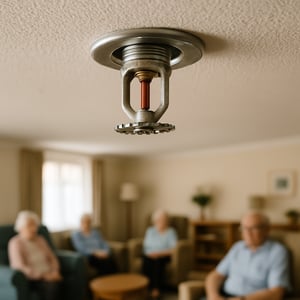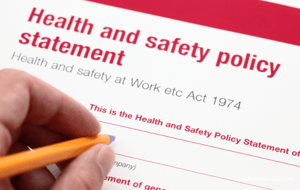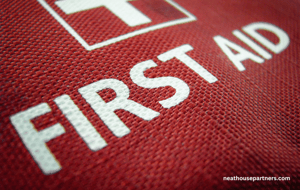Health & Safety of Firework Displays: What Event Holders Must Know
Ensure safety at firework displays with expert guidance on legal duties, risk assessment, and practical measures to protect attendees and comply with health and safety regulations.
Victoria Makepeace
With over 30 years of experience in the health and safety industry, Victoria has built an exceptional track record across both corporate and consultancy roles. She spent her first decade as National Health & Safety Manager for a major pharmaceutical firm, before moving into consultancy, where she has dedicated the past 17 years to advising and supporting diverse clients. Victoria brings a wealth of knowledge, proven leadership, and deep industry insight to every project she undertakes.Date
07 October 2025Updated
07 October 2025
Firework displays can be spectacular community events, but they come with some significant risks. Organisers are legally responsible for ensuring the health and safety of everyone involved, this includes employees, volunteers, contractors and any members of the public attending. Failure to manage those risks can lead to serious injury, property damage and even prosecution.
Key Hazards of Firework Displays
Event holders need to be mindful of the wide range of risks, including:
- Explosions and fire: fireworks are classed as explosives under UK legislation.
- Crowd management issues: surges, slips, trips, and crushing in poorly planned venues.
- Sparks and debris: risks to eyes, skin, and clothing.
- Noise: potential hearing damage and distress to vulnerable people or animals.
- Weather factors: wind can alter flight paths and spread fire risks.
- Untrained handling: fireworks used by unqualified people can cause catastrophic accidents.
Legal Duties for Event Holders
Organisers of firework displays are bound by several health and safety laws and regulations. The main requirements include:
- Health and Safety at Work etc. Act 1974
Event organisers have a legal duty to ensure, so far as reasonably practicable, the health and safety of employees, volunteers, contractors, and member of the public.
- Management of Health and Safety at Work Regulations 1999
A suitable and sufficient risk assessment must be carried out. This should cover fire hazards, crowd management, first aid provision, emergency procedures, and safe handling of fireworks.
- Explosives Regulations 2014
Only fireworks categorised for public display (Category 3 or 4) should be used, and handling/storage requirements must be followed. Displays involving professional-grade fireworks usually require a licensed operator.
- Fireworks Regulations 2004
Restricts when fireworks can be used and imposes limits on noise. Displays outside permitted times may require a specific licence.
- Local Authority Permissions
Depending on the size and scale of the event, organisers may need:
- To notify the local council and fire service.
- A Temporary Event Notice (TEN) under the Licensing Act 2003 if alcohol is being sold.
- Road closure orders or traffic management approval.
Practical Safety Measures for Firework Displays
To meet your legal duties and best practice standards, organisers should:
- Appoint a Competent Person: Engage someone who is experienced in firework safety to oversee planning and operations.
- Risk Assessment: Ensure your risk assessment covers all aspects of the fireworks, from lighting to disposing, bonfires (if included), site layout, crowd control, and emergency procedures.
- Safe Location: Ensure there is sufficient distance between the fireworks and the audience, as well as safe escape routes.
- Fire Safety Arrangements in Place: Ensure fire extinguishers, buckets of water/sand are in place and where possible liaise with the local fire service.
- Plan Crowd Management – barriers, signage, stewarding, and clear entry/exit points.
- First Aid Provision: Ensure that you have trained first aiders on site with a designated first aid point.
- Emergency Planning: Have clear procedures in place for dealing with fire, injury, or evacuation.
- Use Competent Display Operators: It is advisable for large public events, that you hire a professional fireworks display company.
- Notify Neighbours and Animal Owners: Giving advance notice helps reduce risks to pets, livestock, and vulnerable people.
What do the Category of Fireworks Mean?
Category 1: Indoor Fireworks
- Examples: Party poppers, sparklers, novelty fireworks.
- Use: Safe for indoor use, very low hazard.
- Audience distance: None or Minimal.
Category 2: Garden Fireworks
- Examples: Small rockets, fountains, roman candles.
- Use: Outdoor use only, suitable for a small garden display.
- Audience distance: At least 5-8 metres.
Category 3: Display Fireworks
- Examples: Larger rockets, mines, multi-shot bangers.
- Use: Outdoor use only, intended for large open spaces.
- Audience distance: At least 25 metres.
- Hazard Level: Medium hazard, Too powerful for a back garden, used at community or organised public events.
Category 4: Professional Fireworks
- Examples: Aerial shells, large scale display fireworks.
- Use: Professional use only, cannot be legally sold to the general public.
- Audience distance: Variable (often 100 metres+).
- Hazard level: High hazard, requires training, insurance and compliance with strict handling and storage regulations.
What is a Temporary Event Notice?
A Temporary Event Notice (TEN) is a type of licence under the Licensing Act 2003 that allows small-scale events involving regulated activities to take place without needing a full premises licence.
For event holders planning a firework display, a TEN may be required if your event includes any of the following:
- The sale or supply of alcohol.
- The provision of regulated entertainment, e.g.:
- Live music.
- Recorded music.
- Dance performances.
- Film screenings.
- Indoor sporting events.
- The provision of late-night refreshment (hot food or drink between 11pm and 5am).
A firework display on its own usually does not require a TEN. However, if you are also serving alcohol, having music, or providing late-night catering, then one is likely needed.
Key Conditions of a TEN
- Maximum number of people: Up to 499 at any one time (including employees and performers).
- Duration: Each event can last up to 168 hours (7 days).
- Number per year:
- An individual can apply for up to 5 TENs per year (50 if you hold a personal licence).
- A single premises can have up to 15 TENs per year, covering no more than 21 days in total.
- Notice period:
- At least 10 clear working days before the event (standard TEN).
- In exceptional circumstances, a late TEN can be submitted 5–9 working days before the event.
How to Apply for a Temporary Event Notice
- Apply through your local licensing authority (usually the local council).
- The application must also be sent to the police and environmental health, who can object if there are concerns about crime, disorder, or public nuisance.
Conclusion
Firework displays can be spectacular, but they are also high-risk events involving explosives, large crowds, and potential fire hazards. Event holders have both a legal duty of care and a moral responsibility to protect the public.
The key takeaway is that organisers must:
- Understand the firework categories – Category 3 fireworks can be used in large public spaces with controls, while Category 4 fireworks are for licensed professionals only.
- Comply with health & safety laws – by carrying out detailed risk assessments, putting crowd management and emergency measures in place, and ensuring only competent people handle fireworks.
- Secure the right permissions – from notifying local authorities and emergency services, to applying for a Temporary Event Notice (TEN) if alcohol, entertainment, or late-night catering is involved.
- Prioritise safety planning – fire extinguishers, first aid, trained stewards, and clear communication with the public are essential.
When organisers take these steps, they not only meet their legal obligations but also help ensure the event is safe, enjoyable, and memorable for everyone.
Have questions?
Get in touch today
Contact us, and our team will get back to you within 24 hours. We value your questions and are committed to getting them answered quickly.


Hello! I am Nicky
Just fill in the form below with your details, and I will arrange for a member of our team to give you a call.
By clicking, you agree to our Privacy Policy
Related blog posts

New Fire Safety Regulations: What Care Home Providers Need to Know About Mandatory Sprinklers

Why You Should not Rely Solely on ChatGPT or AI Tools to Create Health and Safety Policies

Poor leader knowledge of health & safety is a critical problem for workers
Have questions?
Get in touch today
Contact us, and our team will get back to you within 24 hours. We value your questions and are committed to getting them answered quickly.


Hello! I am Nicky
Just fill in the form below with your details, and I will arrange for a member of our team to give you a call.
By clicking, you agree to our Privacy Policy





